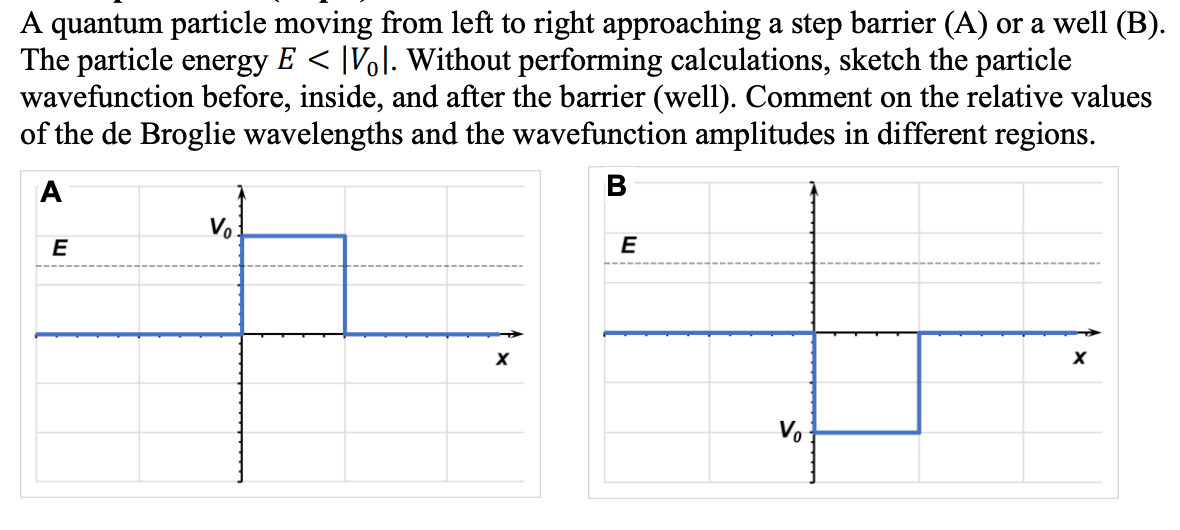A quantum particle moving from left to right approaching a step barrier (A) or a well (B) The particle energy E < Vol. Without performing calculations, sketch the particle wavefunction before, inside, and after the barrier (well). Comment on the relative values of the de Broglie wavelengths and the wavefunction amplitudes in different regions. A B E Vo X E Vo X

For a quantum particle approaching a step barrier (A), the wavefunction will change based on the relative energy of the particle to the height of the barrier.
Before the barrier, the wavefunction will be a plane wave with a uniform amplitude and a constant phase.
At the barrier, the wavefunction will become a superposition of two waves: a transmitted wave with a smaller amplitude and a reflected wave with a larger amplitude. The transmitted wave will continue on the other side of the barrier with a reduced amplitude, while the reflected wave will return back to the left side of the barrier.
The de Broglie wavelength will be smaller inside the barrier than before it, as the wave is being partially reflected and partially transmitted, meaning that the wavefront is being disrupted. The amplitude of the wavefunction will also be different inside the barrier, with a smaller amplitude for the transmitted wave and a larger amplitude for the reflected wave.
Trending now
This is a popular solution!
Step by step
Solved in 2 steps







